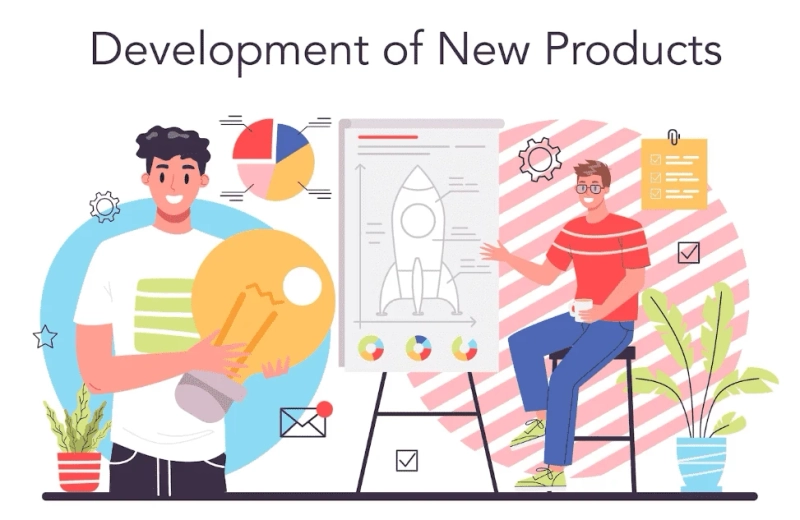Introduction:
Are you wondering if you should go with a Proof of Concept (POC), a Minimum Viable Product (MVP), or a Prototype for your new business launch? Making the right choice can be daunting, but don’t worry – we’re here to help. Our blog post, “Deciding Between POC, MVP, or Prototype? Let Us Help You Choose” will provide a clear comparison of each option to ensure that you make the best decision for your business. We’ll also explain why choosing an experienced Mvp Development Service to help you build your solution is a wise investment.
What is a POC and when should you use it?
A Proof of Concept (POC) is a preliminary demonstration or a small-scale version of a product or service. It aims to validate the feasibility and potential of an idea before committing resources to its development. A POC allows businesses to test their concepts and gather feedback from stakeholders, customers, or investors to determine if the idea has market potential.
POCs are often used when a business wants to evaluate the technical and commercial viability of a new product or service. It helps businesses identify and address any potential challenges or limitations early on.
When it comes to developing a POC, outsourcing software product development can be a beneficial option. It allows businesses to tap into the expertise and resources of external development teams who can efficiently and effectively build the POC. This approach enables businesses to save time and costs while focusing on their core competencies.
What is an MVP and when should you use it?
A Minimum Viable Product (MVP) is a version of a product or service that includes only its core features and functionalities. It is designed to be quickly developed and released to the market, allowing businesses to gather feedback and validate their assumptions. An MVP provides customers with a tangible experience of the product or service, enabling businesses to learn from user interactions and make informed decisions about its further development.
When should you use an MVP? An MVP is ideal when you want to test the market demand and gather valuable insights before investing significant resources in full-scale development. It helps businesses reduce the risk of building a product that may not meet customer needs or fail in the market. Outsourcing software product development for an MVP can be a strategic move, as it allows businesses to leverage the expertise and resources of external development teams. This approach enables faster time-to-market and cost-effective development while ensuring the product meets the desired market needs.
What is a Prototype and when should you use it?
A Prototype is a preliminary model or mock-up of a product or service that is created to showcase its design, functionality, and user experience. It provides a visual representation of the final product, allowing businesses to gather feedback and make necessary improvements before investing in full-scale development.
Prototypes are typically used when businesses want to validate their product's design and usability. They help identify any potential flaws or areas for improvement, ensuring that the final product meets customer expectations.
Outsourcing Software Product Development can be a valuable option for building prototypes. External development teams can bring their expertise and technical skills to create high-fidelity prototypes efficiently and cost-effectively. This approach allows businesses to quickly iterate and refine their product's design before moving forward with development.
Factors to consider when choosing between POC, MVP, and Prototype
When deciding between a Proof of Concept (POC), a Minimum Viable Product (MVP), or a Prototype for your business launch, there are several factors to consider.
Firstly, you need to evaluate your goals and objectives. What are you trying to achieve with your product or service? Are you looking to test the feasibility of an idea, validate market demand, or showcase the design and user experience? Understanding your objectives will help you determine which option is most suitable for your needs.
Secondly, consider your resources. How much time, budget, and expertise do you have available? POCs typically require more time and resources, while MVPs are quicker to develop and release. Prototypes focus on design and usability, so they may require specialized skills and tools.
Thirdly, think about your target audience. Who are you trying to reach and what are their expectations? POCs are useful for gathering feedback from stakeholders and investors, while MVPs provide customers with a tangible experience. Prototypes allow for user testing and refining the product based on feedback.
Lastly, consider the level of risk you are willing to take. POCs and MVPs help mitigate risk by validating ideas and gathering feedback early on. Prototypes allow for iterations and improvements before full-scale development. Assessing your risk tolerance will guide you towards the option that provides the right balance between market validation and product refinement.
Ultimately, the decision between POC, MVP, or Prototype depends on your specific business needs, goals, resources, target audience, and risk tolerance. Carefully evaluating these factors will help you make an informed decision and set your business up for success.


